Introduction
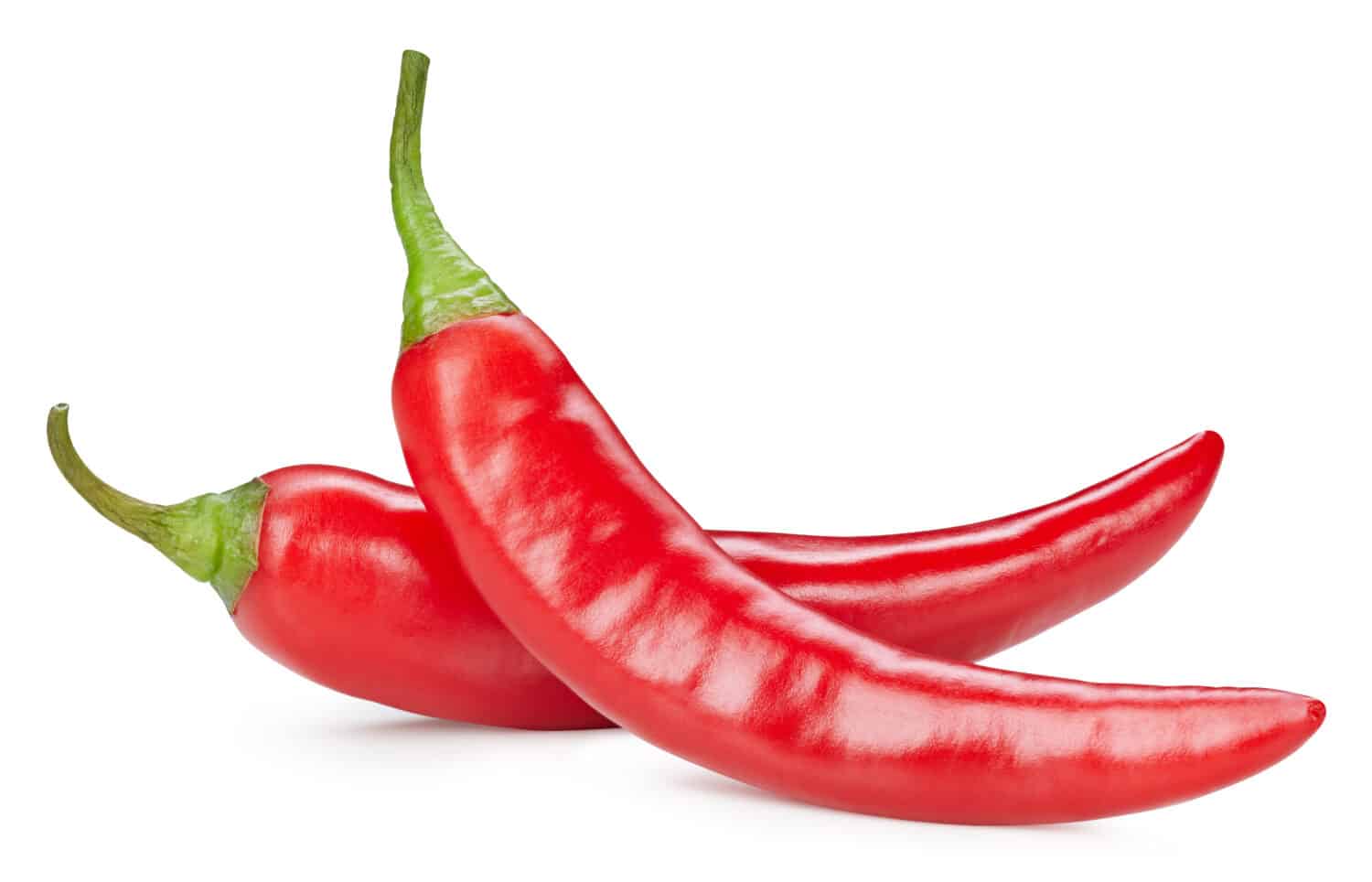
The debate between chiles and peppers has long been a topic of discussion among spice enthusiasts and culinary experts. While both chiles and peppers add heat and flavor to dishes, there are distinct differences between the two. Understanding these differences is important for those who want to delve deeper into the world of spicy ingredients. This blog aims to unravel the spicy debate by exploring the characteristics, heat levels, culinary uses, and health benefits of both chiles and peppers. Whether you prefer the fiery kick of chiles or the milder taste of peppers, this article will help you make an informed choice in your culinary adventures.
Chiles Vs Peppers: Unraveling The Spicy Debate
The debate between chiles and peppers has been an ongoing discussion among spice enthusiasts and culinary experts. While both ingredients add heat and flavor to dishes, there are distinct differences to consider. Chiles, known for their intense heat, come in various categories and popular varieties such as jalapenos and habaneros. Peppers, on the other hand, are milder in taste and offer a range of types like bell peppers and banana peppers. In the end, the choice between chiles and peppers depends on personal preference and the desired level of spiciness in a dish.
The Difference Between Chiles And Peppers
Chiles and peppers may often be used interchangeably in everyday conversation, but there is a subtle difference between the two. Chiles, belonging to the genus Capsicum, are known for their intense heat and spiciness. They come in various categories and popular varieties such as jalapenos and habaneros. On the other hand, peppers, classified under the genus Piper, are milder in taste and offer a range of types like bell peppers and banana peppers. So, while both chiles and peppers add flavor and heat to dishes, the choice between the two depends on individual preference and desired spiciness levels.
Understanding Chiles
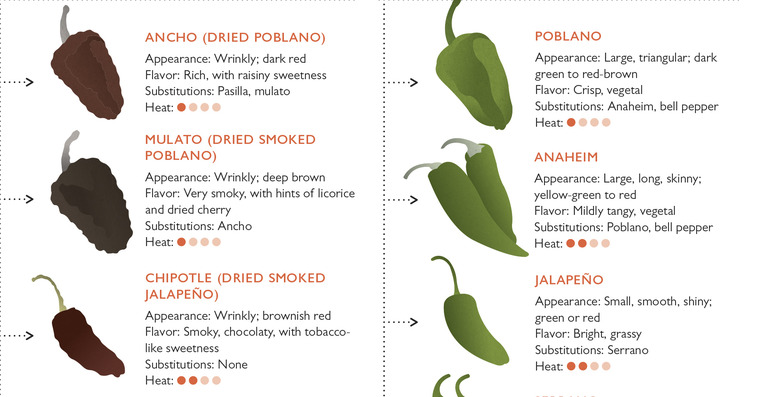
Chiles are a type of spicy pepper that are known for their intense heat and flavor. They come in various categories, each with their own unique heat levels. The Scoville scale is commonly used to measure the spiciness of chiles, with hotter varieties like habaneros and ghost peppers ranking at the higher end of the scale. Chiles are widely used in cuisines around the world to add a fiery kick to dishes. Whether dried, fresh, or in powder form, chiles are a popular ingredient that adds depth and complexity to meals.
Categories Of Chiles And Their Heat Levels
Chiles are classified into different categories based on their heat levels. The Scoville scale is used to measure the spiciness of chiles, with higher Scoville Heat Units (SHUs) indicating greater heat. Here are the main categories of chiles and their approximate heat levels:
- Mild chiles: These include varieties like Poblano (1000-1500 SHU) and Anaheim (500-2500 SHU). They provide a subtle kick without overwhelming heat.
- Medium chiles: Examples include Jalapeno (2500-8000 SHU) and Serrano (10,000-23,000 SHU). They have a noticeable heat that enhances flavors.
- Hot chiles: Habanero (100,000-350,000 SHU) and Thai bird’s eye (50,000-100,000 SHU) fall into this category. They deliver intense heat and should be used sparingly.
- Super-hot chiles: The Carolina Reaper (1,400,000-2,200,000 SHU) and Trinidad Moruga Scorpion (1,200,000-2,000,000 SHU) are some of the hottest chiles in the world. Extreme caution is advised when handling and consuming these chiles.
Remember, the heat level can vary within each category, so it’s essential to taste and adjust accordingly when cooking with chiles.
Popular Varieties Of Chiles
Some popular varieties of chiles include:
- Jalapeno: Known for its medium heat and slightly smoky flavor, jalapenos are commonly used in salsas, nachos, and stuffed peppers.
- Habanero: These small, fiery chiles have a fruity flavor and pack a punch with their intense heat. They are often used in hot sauces and spicy marinades.
- Poblano: With a mild to medium heat level, poblanos are frequently used in Mexican cuisine, especially for dishes like chiles rellenos and mole sauce.
- Serrano: Serranos are hotter than jalapenos and have a bright and crisp taste. They are great for adding a spicy kick to salsas and sauces.
- Chipotle: Made from smoked and dried jalapenos, chipotle chiles have a rich and smoky flavor. They are often used in Mexican dishes like adobo sauce and chili con carne.
- Thai bird’s eye chiles: These small but mighty chiles are extremely hot and commonly used in Thai and Southeast Asian cuisines for adding fiery heat to dishes like curries and stir-fries.
These are just a few examples of the many varieties of chiles available, each with its own unique heat level and flavor profile.
Exploring Peppers
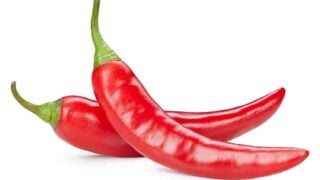
Exploring Peppers:
Peppers come in a variety of shapes, sizes, and colors, each with its own unique flavor profile. Some common types of peppers include bell peppers, which are mild and sweet, and come in different colors such as green, red, and yellow. Poblano peppers, on the other hand, have a mild to medium heat level and are often used in Mexican cuisine for dishes like chiles rellenos. Other popular peppers include serrano peppers, which are hotter than jalapenos, and banana peppers, which are mild and tangy. Peppers can be used in a wide range of dishes, from salads and stir-fries to stuffed peppers and pickled peppers. They add flavor, color, and a hint of heat to any culinary creation.
Different Types Of Peppers
There are numerous types of peppers, each with its own distinctive characteristics and flavors. Some popular varieties include:
- Bell peppers: These come in different colors, such as green, red, and yellow, and have a mild and sweet taste.
- Poblano peppers: These are mild to medium in heat and are often used in Mexican cuisine for dishes like chiles rellenos.
- Serrano peppers: These are hotter than jalapenos and are commonly used in spicy salsas and sauces.
- Banana peppers: These mild and tangy peppers are often pickled and used in sandwiches and salads.
- Habanero peppers: These are extremely hot and have a fruity taste, making them a popular choice for adding heat and flavor to various dishes.
Each type of pepper adds its own unique flavor and heat level to culinary creations.
Peppers And Their Culinary Uses
Peppers are incredibly versatile and can be used in a wide range of culinary creations. They add a burst of flavor, color, and heat to dishes from various cuisines around the world. Some popular ways to use peppers in cooking include:
- Sauteed or roasted: Peppers can be sautéed or roasted to bring out their natural sweetness and soften their texture.
- Stuffed: Bell peppers are often stuffed with a mixture of rice, meat, or vegetables and baked until tender and delicious.
- Grilled: Grilling peppers adds a smoky flavor and charred appearance, making them a great addition to salads, sandwiches, or as a side dish.
- Pickled: Peppers, such as banana peppers, can be pickled to preserve their crispness and tangy flavor. They are commonly used as a topping for pizzas, sandwiches, or in relishes.
- Dried and ground: Peppers can be dried and ground into spice powders, like cayenne or paprika, to add heat and flavor to various dishes.
Peppers have a wide range of flavors and heat levels, allowing chefs and home cooks to experiment and create a multitude of dishes that cater to different taste preferences.
Health Benefits
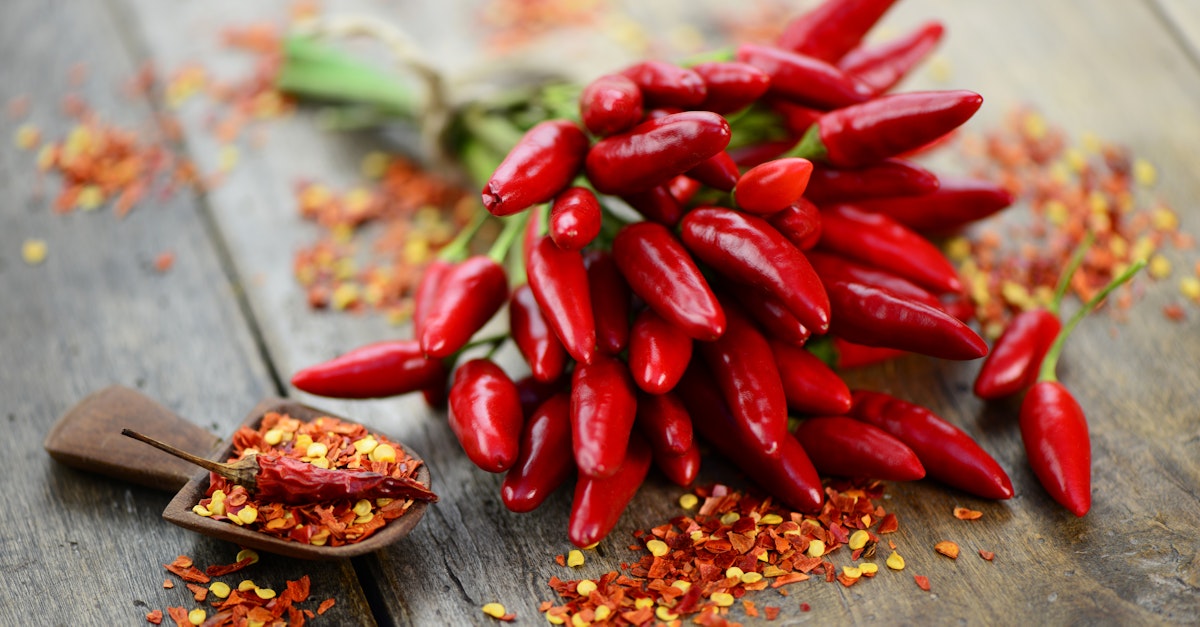
The consumption of chiles and peppers can provide various health benefits. Chiles, specifically, contain capsaicin, the primary ingredient responsible for their heat, which has been found to have potential health benefits. It may aid in weight management by increasing metabolism and reducing appetite. Additionally, capsaicin has anti-inflammatory and antioxidant properties that may help reduce the risk of chronic diseases such as heart disease and cancer. Peppers, on the other hand, are rich in vitamins A and C, which are essential for immune function and skin health. They also provide dietary fiber, which supports digestive health.
Health Benefits Of Chiles
Chiles offer various health benefits due to their capsaicin content. Capsaicin, the compound responsible for their spiciness, has been found to have potential health properties. It may aid in weight management by increasing metabolism and reducing appetite. Additionally, capsaicin possesses anti-inflammatory and antioxidant properties that may help reduce the risk of chronic diseases such as heart disease and cancer. These benefits make chiles a valuable addition to a healthy diet. However, further research is needed to fully understand and validate the extent of their health effects.
Health Benefits Of Peppers
Peppers, whether sweet or hot, offer several health benefits. They are rich in vitamins A and C, which are essential for immune function and healthy skin. Peppers also contain antioxidants that help protect the body against damage caused by free radicals. Additionally, the capsaicin found in hot peppers may have anti-inflammatory properties and can help relieve pain. Some studies suggest that peppers may also have antimicrobial and anti-cancer properties. Including peppers in your diet can contribute to overall health and well-being.
Culinary Uses
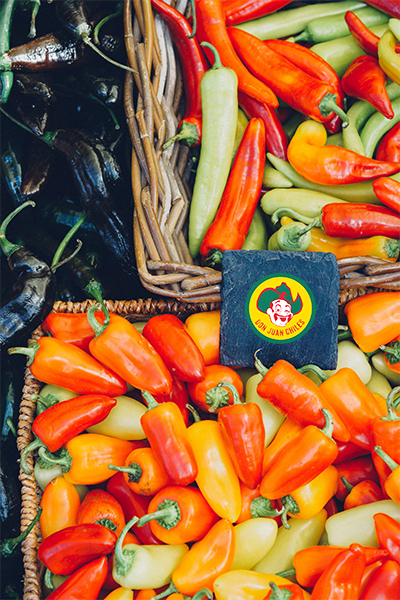
Peppers and chiles have a wide range of culinary uses, adding a burst of flavor and heat to dishes from various cuisines around the world. Here are some popular ways they are used in cooking:
- Chiles are commonly used in Mexican and Southwestern cuisine, where they are used to make salsas, hot sauces, and marinades. They are also added to stews, soups, and chili dishes for an extra kick.
- Peppers are often used in Mediterranean and Middle Eastern dishes. They can be roasted, stuffed, or grilled and used in salads, sandwiches, and stir-fries.
- Both peppers and chiles can be pickled or dried for use in spice blends and as a condiment.
Whether you prefer the heat of chiles or the sweet and tangy flavor of peppers, incorporating them into your cooking can add depth and complexity to your dishes.
Chiles In Different Cuisines
Chiles have a significant presence in various cuisines around the world. In Mexican and Southwestern cuisine, chiles are a staple ingredient, used to create salsas, hot sauces, and marinades. They add a distinctive heat to stews, soups, and chili dishes. In Asian cuisines, chiles are used to make spicy stir-fries, curries, and sauces. In Indian cuisine, chiles are a fundamental component of many dishes, such as vindaloo and curry. African cuisines also incorporate chiles to add heat and flavor to dishes like jollof rice and peri-peri chicken. Chiles are valued for their ability to enhance the taste and complexity of a wide range of dishes across different culinary traditions.
Peppers In Various Dishes
Peppers play a versatile role in various dishes, adding flavor, color, and a hint of spiciness. Some popular dishes that incorporate peppers include:
- Stuffed peppers: Peppers are often stuffed with a mixture of ground meat, rice, vegetables, and spices, then baked or grilled to create a delicious meal.
- Fajitas: Sliced peppers are a key ingredient in fajitas, adding a vibrant and crunchy element to the sizzling meat and onions.
- Pizza and pasta dishes: Peppers add a pop of color and a mild spiciness to pizzas and pasta sauces, enhancing the overall flavor profile.
- Salads: Roasted or raw peppers are a common addition to salads, bringing a refreshing crunch and a touch of heat.
- Stir-fries: Peppers add a burst of color and a slight heat to stir-fried dishes, balancing out other flavors and textures.
Whether you’re enjoying stuffed peppers, savoring fajitas, or enhancing the flavor of your favorite pasta dish, peppers offer a versatile and tasty addition to a wide range of culinary creations.
Conclusion

In conclusion, understanding the difference between chiles and peppers is important for navigating the world of spicy flavors. While chiles belong to the Capsicum genus and are known for their intense heat, peppers belong to the Piper genus and offer a milder taste. Both chiles and peppers have their own unique culinary uses and health benefits. Whether you prefer the fiery kick of chiles or the subtle warmth of peppers, incorporating these ingredients into your dishes can add depth and complexity to your culinary creations. So, choose wisely and enjoy the spicy debate!
Choosing Between Chiles And Peppers
When it comes to choosing between chiles and peppers, it ultimately depends on your taste preferences and the dish you’re preparing. If you’re looking for intense heat and a bold flavor, chiles are the way to go. They come in various heat levels and offer a wide range of flavors to enhance your dishes. On the other hand, if you prefer a milder taste with a subtle kick, peppers are a great choice. They add a touch of warmth without overpowering the dish. Consider the desired level of spiciness and the overall flavor profile you want to achieve when deciding between chiles and peppers.
Final Thoughts
In conclusion, the debate between chiles and peppers ultimately comes down to personal preference and the desired level of spiciness in a dish. Chiles offer intense heat and a wide range of bold flavors, while peppers provide a milder taste with a subtle kick. Both chiles and peppers have their own unique culinary uses and health benefits. Whether you choose chiles or peppers, they can enhance the flavor and spice of your dishes. So, experiment with different varieties and find the perfect balance of heat and flavor that suits your taste buds.
Frequently Asked Questions about Chiles vs Peppers
Q: What is the difference between chiles and peppers?
A: While chiles and peppers belong to the same family, the main difference lies in their heat levels. Chiles are generally hotter and spicier, while peppers are milder in flavor. However, the terms “chiles” and “peppers” are often used interchangeably in different regions, causing some confusion.
Q: Are chiles and peppers the same plant?
A: Yes, both chiles and peppers belong to the Capsicum genus. They are all fruits of the Nightshade family, with various sizes, shapes, colors, and levels of heat.
Q: What makes chiles hot?
A: The heat of chiles is measured in Scoville Heat Units (SHUs). The compound responsible for the heat is called capsaicin, which can stimulate nerve endings in the skin and mucous membranes. The more capsaicin present, the hotter the chile.
Q: Can peppers be spicy too?
A: While most peppers are mild, some varieties can have a slight level of heat. For instance, the Anaheim pepper or the poblano pepper are often considered mild peppers but may occasionally have a mild spiciness.
Q: Which are some popular chiles?
A: There are numerous popular chiles worldwide, including jalapenos, habaneros, serranos, Thai bird’s eye, scotch bonnet, and ghost chiles. Each chile has its distinct flavor profile and heat intensity.
Q: Are bell peppers considered chiles or peppers?
A: Bell peppers, also known as sweet peppers, are considered peppers and not chiles. They are colorful and mild, containing little to no capsaicin, which gives chiles their characteristic heat.
Q: How can you tell the heat level of a chile or pepper?
A: The heat level of chiles and peppers can be estimated by their appearance. Generally, smaller ones tend to be hotter, whereas larger peppers are milder. However, the best way to determine the heat level is by looking at the Scoville scale, which rates the intensity of chiles’ heat.
Q: Are chiles and peppers used differently in cooking?
A: Chiles and peppers are commonly used to add flavor, color, and heat to various dishes. Chiles are more frequently employed in spicy cuisines, such as Mexican, Thai, and Indian, to provide a fiery kick. Peppers, on the other hand, are often used in salads, stir-fries, sauces, and as a stuffing in different culinary traditions.
Q: Can you substitute chiles for peppers?
A: Substituting chiles for peppers or vice versa depends on personal preference and the desired flavor profile. If you prefer a milder taste, using peppers instead of chiles would be suitable. However, it is essential to consider that peppers lack the distinctive heat that chiles bring.
Remember, when using chiles or peppers in your cooking, it is always wise to start with a little and adjust according to your tolerance for heat. Enjoy experimenting with the unique flavors and culinary possibilities they offer!

From At-Home Dinner Parties to Family Reunions to Office Parties, we can cater your next Event!